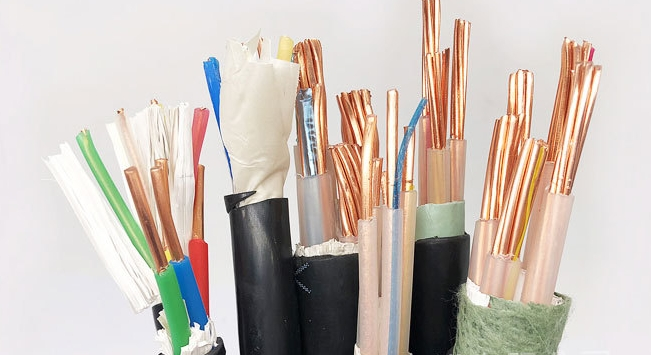As the intelligence of society becomes more and more popular, modern wiring is like the human nervous system, extending to every corner of the building.

There are so many wire and cable models, but their fire resistance and flame retardant requirements have been ignored by people, which has become a huge hidden danger of fire.
So how to choose the fire resistance and flame retardant grade of wires and cables in project engineering design ? This article provides the following suggestions for your reference:

Cable laying environment
The cable laying environment determines to a large extent the probability that the cable will be attacked by external fire sources and the possibility of delayed combustion and disaster after fire.
For example, non-resistive cables can be used for direct burial or separate pipes (metal, asbestos, cement pipes).
If the cable is placed in a semi-closed bridge, trunking or special cable trench (with a cover), the flame retardant requirements can be appropriately reduced by one to two levels. It is recommended to use flame retardant Class C or Flame Retardant Class D.
Because there are less chances of being invaded by external factors in this environment, even if it catches fire due to the narrow and occluded space, it is easy to self-extinguish and is less likely to cause a disaster.

On the contrary, the flame retardant level should be appropriately increased if the fire is exposed indoors, if the room is climbed through the building, or in a secret passage, mezzanine, or tunnel corridor, where human traces and fire are easily accessible and the space is relatively large and the air can easily circulate. It is recommended to choose flame retardant class B or even flame retardant class A.
When the above-mentioned environment is in front of or behind a high-temperature furnace or in a flammable and explosive chemical, petroleum, or mine environment, it must be handled strictly, and it is better to be high than low. It is recommended to use flame retardant Class A, or halogen-free low-smoke flame retardant and fire-resistant Class A.

How many cables are laid?
The number of cables affects the flame retardant level of the cable. It is mainly the amount of non-metallic materials in the same space that determines the level of flame retardant.
When calculating the volume of non-metallic materials of wires and cables, the concept of the same space refers to the flame of the cable when it catches fire. Or a space where heat can radiate unimpeded to nearby wires and cables and can ignite them.
For example, for trusses or trough boxes with fire-proof boards that are isolated from each other, the same channel should refer to each bridge or trough box.
If there is no fire isolation above, below or left and right, in the event of a fire affecting each other, the non-metallic cable volumes should be uniformly included in the calculation.
Cable thickness
After the volume of non-metallic objects in the cable in the same channel is determined, looking at the outer diameter of the cable, if the cables are mostly small (diameter below 20mm), the flame retardant category should be dealt with strictly.
On the contrary, if the cables are mostly large (diameter 40mm or more), the flame retardant category should be treated more strictly.

The reason is that cables with smaller outer diameters absorb less heat and are easy to ignite, while cables with larger outer diameters absorb more heat and are not suitable for ignition.
The key to forming a fire is to ignite it. If it is ignited but does not burn, the fire will extinguish itself. If it burns but does not extinguish, it will cause a disaster.
Flame retardant and non-flame retardant cables should not be mixed in the same channel
The flame retardant levels of wires and cables laid in the same channel should be consistent or similar. The extended flame of low-level or non-flame-retardant cables is an external fire source for high-level cables. At this time, even if Class A flame retardant Cables also have the potential to catch fire.

Depth of fire hazard determines cable flame retardancy level
For cables used in major engineering projects, such as units above 30MW, ultra-tall buildings, banks and financial centers, large and extra-large crowded places, etc., the flame retardant level should be higher and stricter under the same conditions, and it is recommended to choose low Smoke-free, halogen-free, fire-resistant and flame-retardant cable.
Power cables and non-power cables should be laid isolated from each other
Relatively speaking, power cables are easy to catch fire because they are hot and have the possibility of short-circuit breakdown, while control cables and signal control cables are in a cold state due to low voltage and small load, so they are not easy to catch fire.
Therefore, it is recommended that they be installed in the same The two spaces are laid separately, with the power cable on top and the control cable on the bottom. Since the fire is moving upward, fire isolation measures are added in the middle to prevent burning materials from splashing.
Post time: 2024-08-08




